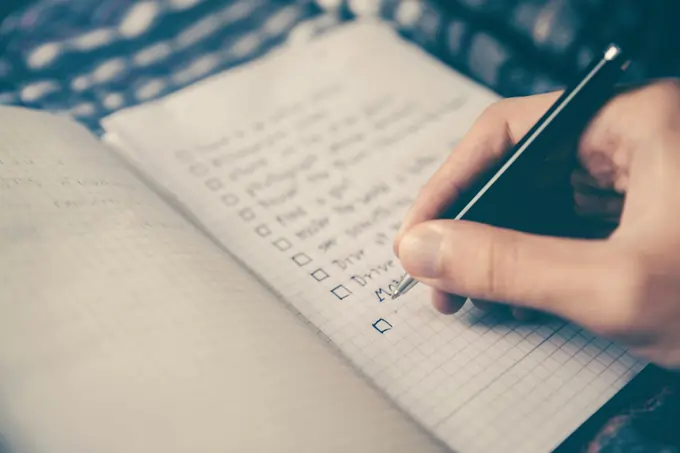
The Ultimate Guide to Effective Note-Taking Strategies: Maximizing Learning
Note-taking is a valuable skill that can help you learn and remember information more effectively. Whether you’re a student, a professional, or someone who wants to improve their learning abilities, mastering the best Note-Taking Strategies can make a significant difference.
What Are the Best Note-Taking Strategies?
Note-Taking Strategies can really save your bacon when studying. A major reason for diving in could be your grades. Try mixing it up with methods like mind maps, Cornell notes, or just plain old bullet points. Find what clicks with you and run with it!
Understanding Different Note-Taking Strategies
There are several note-taking methods to choose from, each with its own strengths and weaknesses. Some common Note-Taking Strategies include the Cornell method, the outline method, the mapping method, and the charting method.
Comparing Note-Taking Methods
The Cornell method involves dividing your paper into sections for notes, cues, and summaries. The outline method organizes information hierarchically, using headings and subheadings. The mapping method uses visual diagrams to connect ideas, while the charting method organizes information into tables or charts.
Using Note-Taking Techniques for Different Learning Styles
Different note-taking methods cater to different learning styles. Visual learners may benefit from the mapping method, while those who prefer structure may find the outline method more effective. It’s important to experiment with various techniques to find the one that works best for you.
How to Implement the Cornell Note-Taking Method?

Looking to up your note-taking game? Try the Cornell Method! Just divide your page into three sections: notes, cues, and summary. A major reason to use it? It keeps everything organized. For each subtopic, jot down main points on the note side, key terms in cues, and a quick summary at the bottom!
Introduction to the Cornell Method
The Cornell method, developed at Cornell University, is a popular note-taking system that helps organize information in a structured way. It’s also helpful for reviewing and studying notes after class.
Steps to Create Cornell Notes
- Draw a vertical line about 2.5 inches from the left side of your paper, creating a narrow column on the left.
- Start by writing the main topic or lecture title at the top of the page.
- Writing the main ideas and key points in the larger column on the right.
- Use the narrow column on the left to jot down questions, cues, or summaries after the lecture or meeting.
Benefits of the Cornell Note-Taking System
The Cornell method helps you organize information in a clear and concise way, making it easier to review and study later. It’s designed to help you identify the main ideas and key points, as well as any areas you may have missed or need to review further.
What Is the Outline Method of Note-Taking?
The Outline Method of note-taking is super handy and straightforward. It organizes notes by breaking them down into main topics and subtopics.
This helps in keeping everything clean and easy to review.
For instance, you’ll list a main topic, and under it, note down related subtopics with little indents. It’s a major reason why students love it—it makes studying a breeze!
Basics of the Outline Method
The outline method is a structured approach to note-taking that organizes information hierarchically, using headings and subheadings. It’s a great way to organize your notes and make connections between different ideas and concepts.
Creating Notes Similar to the Outline Method
To create notes using the outline method:
- Identify the main topic or idea.
- Use Roman numerals, letters, or numbers to create subheadings and sub-subheadings.
- Jot down notes in bullet points or short phrases under each subheading.
Advantages of Structured Note-Taking Systems
The outline method helps you keep your notes organized and easy to review. It may have missed some details, but it provides a clear overview of the main points and how they’re connected.
How to Use the Mapping Method Effectively?

Want to ace your note taking? The Mapping Method is a game-changer. Start by jotting down the main idea, then branch out with subtopics. Honestly, a major reason this note-taking method is one of the best is that it visually organizes info, making it a breeze to study. Give it a shot!
Overview of the Mapping Method
The mapping method, also known as mind mapping, is a visual note-taking technique that uses diagrams to represent ideas and their relationships. It’s a great way to take notes for visual learners or when dealing with complex topics.
Step-by-Step Guide: Creating Mind Maps
- Start with the main topic or main idea in the center of your page.
- Draw branches radiating from the center, representing the main subtopics or ideas.
- Add additional branches and sub-branches to jot down more specific details and connections.
- Use colors, symbols, and images to make your mind map more visually appealing and memorable.
Using Maps for Visual Learners
The mapping method is ideal for visual learners or those who prefer a more creative approach to note-taking. It helps you see the bigger picture and make connections between different ideas and concepts.
How Can the Charting Method Improve Your Note-Taking?
The Charting Method is a great note-taking method to keep track of multiple subtopics. It’s based on advice from Professor Walter Pauk, and it’s all about laying out notes in a way that makes sense to you later. It’s especially useful for both synchronous and asynchronous learning.
A major reason it’s one of the best is that you can jot down information using bullets and phrases, which helps when you review your notes. This method works best if you’re someone who needs to organize points clearly. Just make sure you understand what you’re writing as you use your notes later on.
In addition, this method is best when students need to make sure you understand and retain info better than digital alternatives. It’s tailored to help highlight key ideas and organize those scattered thoughts in a way that’s straightforward.
Exploring the Charting Method
The charting method involves organizing information into tables, charts, or diagrams. It’s a great way to take notes on topics that involve comparisons, timelines, or lists of items.
Creating Charts: What’s Most Important?
When creating charts for note-taking:
- Identify the main categories or headings for your chart.
- Jot down key information or details under each category.
- Use visual cues, such as colors or symbols, to highlight important points or connections.
Review and Revisit: Making the Most of Your Notes
Regardless of the note-taking method you choose, it’s essential to review and revisit your notes regularly. This will help you learn and remember the information more effectively, and identify any areas where you need to seek clarification or additional information.
Why Handwritten Notes Are Still Relevant?
A major reason why handwritten notes are still relevant is that they help students engage with the material on a deeper level. When you take notes during class using the sentence method or sentence note-taking, you’re actively processing information, which is key for retention.
Professor Walter Pauk’s note-taking method emphasizes the importance of actively taking notes and organizing a hierarchy of information, making it easier to review later. Effective notes can greatly aid in understanding and remembering course material.
To ensure this, you can ask your professor for tips on how to take good notes in class. The outline method is one of the best note-taking methods for organizing information. Whether it’s synchronous or asynchronous learning, the goal is to write notes that you can easily review and use for studying.
Academic coach advice often includes practicing first time without distractions to refine your note-taking skills. Taking good notes in class can help organize your thoughts for exams and ultimately help you succeed in your studies.
Benefits of Handwritten Notes Over Typing
While typing notes can be faster and more convenient, research has shown that handwriting notes can lead to better learning and retention. “A major reason for this is that the act of writing engages more cognitive processes, leading to deeper processing and understanding of the material.
Effective Note-Taking by Hand in Class
Taking notes by hand during class or a lecture can help you stay focused and engaged with the material. It also encourages you to write down questions or areas of confusion, which you can then clarify with your professor or during office hours.
Research Shows: Handwriting for Better Learning
Numerous studies have found that handwriting notes is more effective for learning and remembering information than typing notes. The act of writing helps reinforce the material in your mind and can lead to better academic performance, especially for students with learning disabilities.
By mastering effective note-taking strategies, you can improve your ability to learn, retain, and apply new information in various contexts. Whether you prefer the structured approach of the Cornell or outline methods, the visual appeal of mind maps, or the organized nature of charts, find the technique that works best for you and make note-taking a valuable part of your learning journey.




